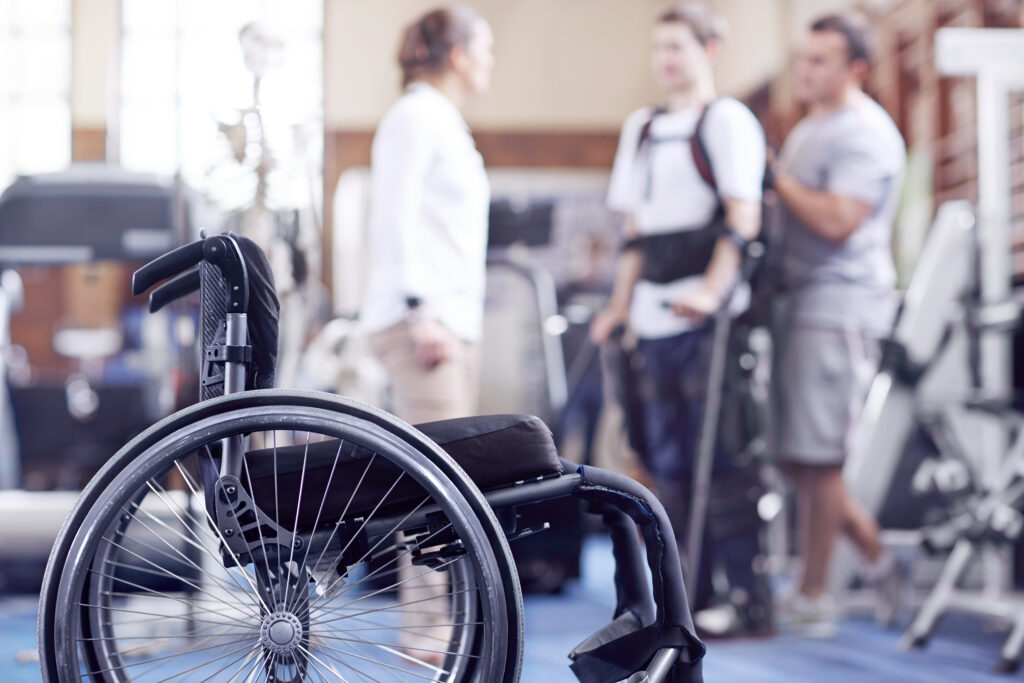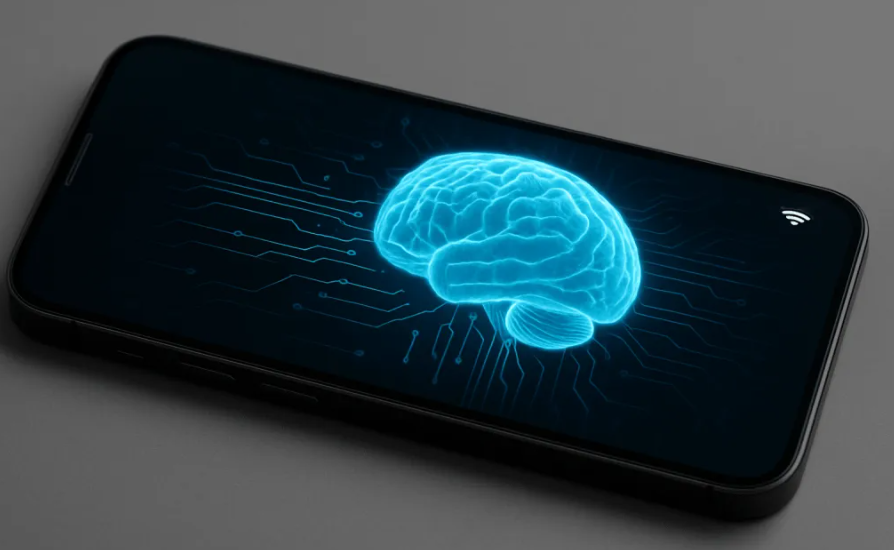Introduction
In a world increasingly driven by digital interaction, people with paralysis have long faced barriers to fully participating in modern technology. But a new collaboration between Apple and Synchron, a neurotechnology startup, is poised to change that narrative. Together, they are working on a revolutionary brain-computer interface (BCI) that could allow users to control devices like iPhones, iPads, and VR headsets using only their thoughts.
This partnership builds on Synchron’s breakthrough neural implant technology, which uses tiny electrodes inserted through the bloodstream to interpret signals from the brain’s motor cortex. Unlike traditional BCIs that require invasive brain surgery, Synchron’s method is minimally invasive and more accessible, making it ideal for real-world applications.
Apple’s involvement suggests a strong focus on usability, privacy, and accessibility, potentially setting a new industry standard. If successful, this innovation could restore independence to millions of people living with paralysis and redefine how we engage with technology.
This article explores how Synchron’s tech works, Apple’s role, key benefits for users with disabilities, and what to expect in the coming years as mind-controlled technology moves closer to mainstream use.
The Challenge of Paralysis in a Digital World
In today’s hyper-connected digital era, the ability to interact with technology is essential for communication, work, learning, and even daily living. For people living with paralysis—caused by conditions such as spinal cord injury, ALS (amyotrophic lateral sclerosis), stroke, or multiple sclerosis—this presents a profound challenge. The inability to move arms, hands, or other parts of the body severely limits access to the digital tools most of us take for granted.
While there have been advances in assistive technology—like eye-tracking devices, sip-and-puff systems, and voice recognition software—these solutions come with significant limitations. Eye-trackers can be exhausting to use for long periods. Voice control doesn’t work well in noisy environments or for individuals with speech impairments. Traditional switch-based systems require some residual movement and often operate slowly.
This means that many people with severe physical impairments remain excluded from the full digital experience. Tasks like sending a message, browsing the web, or navigating a smartphone app can take minutes or become entirely impossible without a caregiver’s help. The result is not just inconvenience—it’s lost autonomy, limited access to opportunities, and a barrier to inclusion in modern life.
Moreover, as digital platforms evolve to include immersive environments like virtual reality, the gap in accessibility is only widening. The irony is striking: as technology becomes more advanced, it often becomes less accessible to those who might benefit from it the most.
This is where brain-computer interfaces (BCIs) like Synchron’s Stentrode come into play. By translating neural activity directly into digital commands, BCIs offer a radically new way for individuals with paralysis to interact with the world—without relying on physical movement or even voice. The promise is not just better tech—it’s greater independence, restored dignity, and meaningful digital inclusion.
In the next sections, we’ll explore how Synchron’s technology works, why Apple’s involvement is significant, and what this partnership could mean for the future of accessibility.
Who Is Synchron? The Startup Pioneering Brain-Control Tech
Synchron is a neurotechnology startup that’s rapidly gaining attention for making brain-computer interfaces (BCIs) more practical, safer, and accessible than ever before. Founded in 2016 and headquartered in Brooklyn, New York, Synchron was born from a mission to help people with severe motor impairments regain digital independence—using only their thoughts.
At the heart of Synchron’s innovation is the Stentrode, a tiny, mesh-like neural implant that can be inserted into the brain through the jugular vein, making it far less invasive than traditional brain surgeries. Unlike more invasive options like craniotomy (used by companies such as Neuralink), Synchron’s approach requires no open-brain procedure. This allows the implant to reach the motor cortex, where movement intentions are generated, without cutting through the skull.

Once in place, the Stentrode records brain signals linked to the user’s intent and sends them to an external device. These signals can be translated into commands to operate digital interfaces such as smartphones, tablets, and even smart home devices. In real-world trials, patients with conditions like ALS have successfully used the system to send texts, browse the web, and control apps—entirely hands-free.
Synchron’s device has already received the FDA’s Breakthrough Device designation, and in 2021, it became the first company to receive U.S. approval to conduct clinical trials of a permanently implanted BCI. This milestone places Synchron ahead of many competitors in terms of real-world deployment.
In many ways, Synchron’s strength lies in its balance between cutting-edge science and practical deployment. It focuses on creating a solution that can realistically integrate into users’ lives without overwhelming medical risk or complexity.
With Apple now entering the picture, Synchron stands to gain even more traction. Apple’s focus on accessibility and user-friendly design could complement Synchron’s hardware, bringing the power of brain-controlled interfaces into mainstream consumer technology.
Up next, we’ll explore Apple’s motivations for this partnership and what it signals for the future of inclusive tech.
Apple’s Role in Redefining Accessibility
Apple has long positioned itself as a leader in digital accessibility. From introducing VoiceOver and Switch Control to launching AssistiveTouch, the company has embedded accessibility into its core design philosophy. Its commitment goes beyond compliance—it’s about empowering every user, regardless of physical or cognitive limitations, to experience technology without barriers. Now, with its collaboration with Synchron, Apple is pushing the boundaries even further by entering the frontier of brain-computer interfaces (BCIs).
This partnership isn’t a sudden leap. Apple has steadily built an ecosystem that supports users with disabilities, making devices intuitive and responsive to alternative forms of interaction. But controlling an iPhone or iPad with pure thought? That’s revolutionary.
By teaming up with Synchron, Apple is exploring how the Stentrode neural implant can act as a natural input method for its devices. This could allow users with paralysis or degenerative diseases to control everything from basic navigation to smart home features—entirely hands-free. It’s a significant shift from reactive to proactive accessibility design.
What makes Apple’s involvement unique is not just its resources but its focus on user experience and integration. Unlike academic or clinical BCI systems that remain confined to lab environments, Apple envisions a world where thought-based input is as seamless as tapping a screen. The company’s emphasis on privacy, security, and ease of use could help transform Synchron’s medical-grade technology into a commercial-ready solution.
Apple’s ecosystem also plays a crucial role. With tight integration between devices like the iPhone, iPad, Apple Watch, and even Apple Vision Pro, a brain-controlled interface could work fluidly across platforms. This opens doors to accessibility in virtual reality (VR), augmented reality (AR), and other immersive experiences.
Moreover, this isn’t just about disability. As Apple often does, it’s likely to frame this innovation as beneficial for all users—introducing features that enhance convenience, speed, and personalization for broader audiences. That strategy often leads to mass adoption of features originally designed for accessibility.
By 2030, Apple’s venture with Synchron could redefine what we expect from smart devices—not just how we touch them, but how we think with them.
How the Implant Works: A Simple Explanation
At first glance, the idea of controlling your phone or computer with your mind may sound like science fiction. But thanks to Synchron’s innovative approach—and Apple’s support—it’s becoming a real, working technology. Here’s how it works, broken down in simple terms.
Step 1: Implanting the Device
The core of this system is a small device called the Stentrode, developed by Synchron. It’s about the size of a paperclip and looks like a mesh tube. Unlike more invasive brain implants, the Stentrode doesn’t require open-brain surgery. Instead, it’s delivered via the jugular vein, using a catheter. From there, it travels up into the brain’s motor cortex—the part responsible for voluntary movements.
Once in place, the Stentrode expands slightly and anchors itself to the walls of a blood vessel near the cortex. No cutting into brain tissue, no skull removal—just a minimally invasive path to the brain.
Step 2: Reading Brain Signals
Your brain sends electrical signals whenever you intend to move—even if your body can’t follow through due to paralysis. The Stentrode is designed to pick up these signals. It doesn’t read your thoughts or decode complex ideas—it simply listens for the specific patterns that indicate your intention to move or select something.
For example, if you “think” about moving your right hand to select an icon, your brain still produces the same electrical signal—even if you’re physically unable to move. The Stentrode captures that signal and sends it to a small transmitter implanted in the chest (similar to a pacemaker).
Step 3: Sending Data to External Devices
From the chest transmitter, the signal is wirelessly sent to an external receiver—which could be a wearable or a connected device. This receiver processes the data using machine learning algorithms that interpret what action you’re trying to perform: a swipe, a click, or even a scroll.
Step 4: Controlling a Device Like an iPhone
Finally, the interpreted signal reaches the target device—like an iPhone, iPad, or Apple Vision Pro. Instead of physically tapping or swiping, the user’s intent is translated into digital actions. Over time, the system adapts to each individual’s brain patterns, making it more accurate and responsive.
This four-step process is what’s powering early tests that let users with paralysis text, browse, and interact with devices—just by thinking.
Life-Changing Use Cases for People with Paralysis
For individuals living with paralysis due to conditions like ALS (Amyotrophic Lateral Sclerosis), spinal cord injuries, or strokes, everyday tasks that others take for granted—like sending a text, scrolling through a website, or turning on the lights—can become impossible without assistance. Apple and Synchron’s brain-computer interface (BCI) collaboration could radically change that.
Communication Made Easy
One of the most significant use cases is restoring communication. Many people with severe motor impairments rely on caregivers or expensive eye-tracking devices to express themselves. With the Synchron implant, users can compose messages, write emails, and browse the internet using only their thoughts. This restores not just communication—but also autonomy and dignity.

In early trials, a patient with advanced ALS successfully used Synchron’s implant to operate an iPhone. He was able to open apps, respond to messages, and even use voice assistants like Siri—without moving a muscle. The impact? Reconnecting with loved ones and regaining a sense of normalcy.
Smart Home Integration
Through Apple’s ecosystem and HomeKit, users could also control their smart home environments. Imagine being able to:
- Adjust the thermostat
- Turn lights on or off
- Lock/unlock doors
- Activate smart speakers
—simply by thinking. This gives people with paralysis a greater sense of independence and control over their daily environment.
Hands-Free Navigation
Navigating an iPad or iPhone using thoughts means access to information, entertainment, and learning is restored. Users can watch videos, attend virtual meetings, read the news, or access educational platforms—without external help.
Entertainment & Gaming
With further integration, users could play thought-controlled games or immerse themselves in virtual reality experiences using Apple Vision Pro. These aren’t just leisure activities—they provide mental stimulation, emotional relief, and social connection.
Mental Wellbeing
Beyond function, the psychological benefit is enormous. The ability to do things independently, to contribute, to engage—builds confidence and reduces feelings of isolation or helplessness. For many, this technology isn’t just helpful—it’s life-changing.
Synchron vs Other Brain-Tech Players (e.g., Neuralink)
As brain-computer interface (BCI) technology becomes a growing frontier in healthcare and human augmentation, several companies are leading the charge—most notably Synchron and Neuralink. While both aim to connect the human brain with digital devices, their approaches, safety levels, and timelines differ significantly.
Different Philosophies, Same Goal
Synchron focuses on accessibility and safety, prioritizing a minimally invasive method that integrates seamlessly with the body’s vascular system. In contrast, Neuralink, founded by Elon Musk, opts for a high-bandwidth neural implant that involves brain surgery to embed threads directly into brain tissue.
Both companies aim to restore function and offer digital control for people with disabilities—but their current stages of development and risk profiles are very different.
Side-by-Side Comparison
| Feature / Metric | Synchron | Neuralink |
| Implant Method | Inserted via blood vessels | Inserted via brain surgery |
| Invasiveness | Minimally invasive (no open skull) | Highly invasive |
| Current Human Trials | Ongoing in USA & Australia | FDA-approved trials (as of 2023) |
| Use Case Focus | Accessibility, communication | Broad BCI use (memory, vision, etc.) |
| Partnerships | Partnered with Apple | Independent (with Neuralink devices) |
| Ease of Scalability | High (via existing surgical techniques) | Limited due to complexity |
| Commercial Readiness | Near-term (by 2030) | Medium- to long-term (uncertain) |
Why Synchron Might Lead First
Synchron’s approach is designed with real-world healthcare in mind. It doesn’t require neurosurgeons or robotic drills—just interventional radiologists and catheter techniques already used in hospitals worldwide. This makes it faster to deploy and less risky for users.
While Neuralink aims to push the boundaries of what BCI can do—including memory enhancement and visual augmentation—its ambitious goals also bring regulatory hurdles and safety concerns that may delay widespread adoption.
The Quiet Race
Though Neuralink receives more media attention, Synchron is often regarded as the more practical and safer option in the short term—especially for accessibility applications like Apple’s initiative. It’s not about who’s first—it’s about who can deliver lasting impact safely.
Expert Opinions on Impact and Ethics
The growing collaboration between Apple and Synchron has sparked conversations not just about technological potential—but about ethical boundaries, accessibility, and societal impact. While many experts are optimistic, they also emphasize the importance of responsibility as brain-computer interfaces (BCIs) move closer to the mainstream.
Medical Experts on Accessibility
Dr. Leigh Hochberg, a neurologist at Brown University and leading researcher in BCI, praised Synchron’s vascular approach as a “paradigm shift in neurotechnology” that balances safety and functionality. “The ability to offer thought-based communication without open-brain surgery brings neurotechnology into a clinical space that’s actually scalable,” he said in a recent symposium.
Healthcare professionals agree: for people with paralysis, BCIs could restore independence and improve quality of life dramatically. When combined with Apple’s device ecosystem and user-friendly design philosophy, the path toward inclusive tech looks clearer than ever.
Ethicists on Privacy and Consent
However, ethicists urge caution. Dr. Nita Farahany, bioethics professor at Duke University, warned of the risks of neurodata misuse. “As we develop devices that decode intent or cognition, we must ensure we protect the most intimate form of data—our thoughts.” Concerns include:
- Who owns the neural data?
- How is it stored and protected?
- Can it be used for advertising or behavioral profiling?
These questions are especially pressing when consumer tech giants like Apple enter the space. Transparency in data usage policies, opt-in consent mechanisms, and strong regulatory oversight are critical.
Industry Voices on Societal Impact
Tech investors and startup leaders, meanwhile, view this as a transformative leap. “This is like the iPhone moment for brain-tech,” said Karen Hao, a Silicon Valley analyst. “If Apple succeeds, we’re not just talking about accessibility—we’re talking about redefining human-device interaction.”
Still, she echoed the need for ethics-by-design, warning against “Silicon Valley optimism” overriding the very people this tech intends to help.
What’s Next? Roadmap to Widespread Adoption
The partnership between Apple and Synchron marks a groundbreaking shift in how we interact with technology—but we’re still in the early stages of mainstream adoption. Several key phases lie ahead before brain-computer interfaces (BCIs) like this become widely accessible.
Phase 1: Clinical Trials & Medical Approval (2024–2026)
Currently, Synchron’s implants are undergoing clinical trials in the U.S. and Australia. Early results from patients with ALS and other conditions have shown that the technology can safely interpret brain signals to control digital devices. The next few years will focus on:
- Expanding the participant pool
- Demonstrating long-term safety and reliability
- Gaining FDA approval and global regulatory acceptance
Success here is essential to ensure medical-grade performance and build trust with both users and healthcare providers.
Phase 2: Integration with Apple Ecosystem (2025–2027)
Once proven effective, Synchron’s interface is expected to integrate more deeply into Apple’s software and hardware, such as:
- iPhone, iPad, and Vision Pro devices
- Native iOS settings for accessibility customization
- Siri voice control backed by neural signals
- Possibly, dedicated BCI APIs for developers
Apple’s strength lies in making complex tech intuitive. Their aim is to make neural control feel as seamless as tapping a screen.
Phase 3: Commercialization & Accessibility (2027–2030)
After regulatory approval and system integration, the path to mass-market availability begins. Priorities will include:
| Focus Area | Key Steps |
| Cost & Affordability | Insurance coverage, subsidies, or payment plans |
| User Training | Clinics, tutorials, and support systems for new users |
| Global Expansion | Local compliance, multi-language support, cultural access |
By 2030, experts expect limited commercial releases in major markets like the U.S., U.K., EU, and Australia, focusing first on users with severe disabilities.
A Transformative Future
While challenges remain, the roadmap is becoming clearer: safe, ethical, and empowering neurotechnology that can redefine digital access and human potential. Apple’s involvement may just be the push needed to bring this once-sci-fi vision into daily reality.
Conclusion: A New Era of Empowerment
Apple’s collaboration with Synchron represents more than just technological progress—it signals a new era of digital empowerment. By merging brain-computer interface innovation with Apple’s accessibility-first philosophy, this partnership has the potential to transform the lives of millions, especially individuals with paralysis or motor impairments.
For the first time, controlling an iPhone, iPad, or even a VR headset may be possible with just a thought—no touch, no voice, just pure intent. While real-world adoption will take time, the roadmap to 2030 looks promising.
Of course, ethical safeguards, data privacy, and affordability remain crucial challenges. But the vision is clear: a world where technology conforms to the user—not the other way around. With Synchron’s neural implants and Apple’s design leadership, the future of inclusive, intuitive, and life-changing tech is closer than ever.



